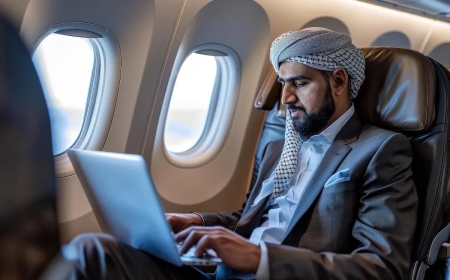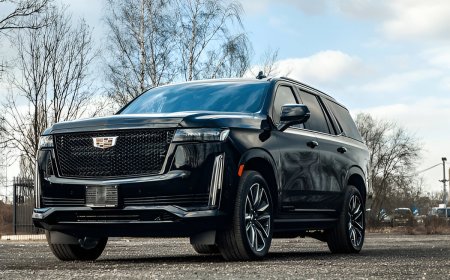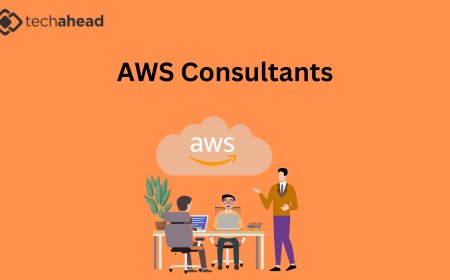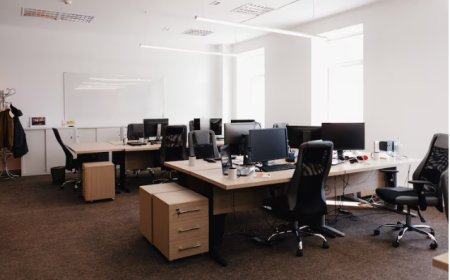The Impact of AR Try-Ons on Ecommerce Conversion Rates
Discover how AR try-ons revolutionize ecommerce conversion rates. Learn about their benefits, implementation, and how Rank Locally UK helps brands succeed with AR-driven strategies.

In recent years, ecommerce has undergone a massive transformation fueled by emerging technologies. One of the most impactful of these innovations is Augmented Reality (AR) try-ons, which allow customers to visualize products in real time before purchasing. From trying on glasses and makeup to previewing furniture in their homes, AR try-ons have significantly reduced the gap between digital browsing and physical shopping experiences. In 2025, their influence on conversion rates is undeniableand the stats speak for themselves.
This blog dives into the power of AR try-ons, their impact on ecommerce businesses, user behavior, and how you can leverage this technology to boost sales. Plus, well show how Rank Locally UK can help integrate AR experiences seamlessly with top-tier SEO, digital marketing, and web development services.
Understanding AR Try-Ons in Ecommerce
AR try-ons use augmented reality technology to overlay digital images onto the real world via smartphones, tablets, or computers. Customers can try products virtually, such as:
-
Glasses and eyewear
-
Makeup (lipstick, foundation, eyeshadow)
-
Watches and jewelry
-
Shoes and clothing
-
Home decor and furniture
Brands like IKEA, Sephora, and Warby Parker have pioneered the use of AR to let customers interact with their products virtually. In turn, theyve seen significant increases in customer engagement, lower return rates, and higher conversion rates.
The Evolution of AR in Ecommerce
In 2020, AR was still a novelty. Fast forward to 2025, its now a necessity for competitive ecommerce brands. Consumers today expect a more interactive and confident online shopping experience, and AR delivers on that demand.
Major developments include:
-
WebAR technology allowing AR without apps
-
Integration into ecommerce platforms like Shopify and Magento
-
Enhanced facial and body tracking for realistic try-ons
-
AI-assisted personalization in AR recommendations
How AR Try-Ons Boost Ecommerce Conversion Rates
1. Increased Purchase Confidence
AR removes guesswork. Shoppers can view how a sofa looks in their living room or how a jacket fits their body type. This confidence translates directly into purchases.
2. Reduced Return Rates
Many returns happen because the product wasnt what the buyer expected. AR sets the right expectations by giving realistic previews, significantly reducing returns.
3. Better User Engagement
AR encourages longer interaction times. Customers engage more with products when theyre exploring and trying them on virtually.
4. Personalization at Scale
With AI and AR combined, retailers can suggest personalized options based on facial structure, body type, or room size.
5. Social Sharing and Virality
AR experiences are inherently visual and shareable. Brands can incorporate social media sharing buttons to increase organic reach and attract new customers.
Real-World Case Studies
Warby Parker Virtual Try-On Glasses
Their app allows users to try on frames using their smartphone camera. The result? A 50% increase in conversion rates compared to traditional product pages.
Sephora Virtual Makeup App
Sephora's AR features led to a 22% increase in conversions and longer time spent on the app.
IKEA Place App
With AR, customers can place true-to-scale 3D models of furniture in their homes. This not only improves conversions but also reduces buyers remorse.
Implementation Tips for AR Try-Ons in Your Ecommerce Strategy
1. Choose the Right AR Technology
Decide between WebAR (browser-based) or app-based AR, depending on your target audience.
2. Optimize for Mobile
Since most users browse via mobile, ensure AR try-ons work seamlessly on various screen sizes.
3. Integrate with Product Pages
Embed AR features directly into product listings to keep user experience seamless.
4. Use AI for Smarter AR
Combine AR with AI for product suggestions, size recommendations, and real-time feedback.
5. Measure and Iterate
Track metrics like interaction time, add-to-cart rate, and post-AR conversions to continuously refine the experience.
Role of SEO and Web Development in AR Ecommerce Success
Implementing AR isnt just about cool techits about making it findable, functional, and fast. Here's how Rank Locally UK supports this transformation:
SEO Services
AR features can be heavy on resources, but with SEO Agency support, your pages remain optimized for speed and ranking. Our SEO experts ensure that your product pages get visibility even with complex AR integrations.
We also offer local SEO strategies for businesses that combine physical stores with online AR offerings. Our affordable local SEO services help you capture regional audiences searching for immersive shopping experiences.
Web Development Services
AR features require flawless UX. Our website designing company builds responsive, AR-compatible sites. From custom web design to ecommerce website designing, we ensure your platform supports AR without compromising performance.
Whether you need a web design agency or a web development company to integrate AR plugins, Rank Locally UK is your trusted partner.
? Digital Marketing
Through our digital marketing services, we promote AR features on social media, email campaigns, and Google Ads. As a top digital marketing company, we know how to highlight interactive selling points to boost click-through and conversion rates.
Online Reputation Management
Good AR experiences generate buzz. But one poor user interaction can go viral. Thats where our reputation management services come in. We monitor and protect your online presence, offering online reputation repair if needed.
Rank Locally UK Your Partner for AR Ecommerce Success
Rank Locally UK helps ecommerce brands go beyond traditional selling techniques. Whether you want to launch your first AR try-on or optimize an existing one, our team offers the complete digital toolkit:
-
Best SEO Company for ecommerce growth
-
Website Development Company that builds AR-ready platforms
-
Best Digital Marketing Agency to promote your immersive features
-
Reputation Management Company to guard and grow your brand trust
Let us help you innovate with purpose, and convert with precision.
Future of AR Try-Ons in Ecommerce
By 2026 and beyond, AR will be standard in ecommerce platforms. Heres what to expect:
-
Haptic feedback to simulate textures
-
Voice-guided AR shopping assistants
-
Deeper AI integration with behavioral learning
-
AR shopping rooms within the metaverse
Early adoption in 2025 isnt just smartits necessary for brands that want to lead rather than follow.
AR try-ons are no longer optional; they are a key driver in ecommerce success. They bridge the gap between physical and digital retail, instill buyer confidence, and slash return ratesall while delivering a superior user experience. But like any powerful tool, success depends on how well you implement it.
With Rank Locally UK, you gain a partner that not only understands AR but empowers it with expert SEO, world-class web development, and results-driven marketing.
Embrace the AR revolution nowbefore your competitors do.
15 FAQs About AR Try-Ons and Ecommerce Conversion
-
What are AR try-ons in ecommerce?
AR try-ons allow users to visualize products on themselves or in their environment using augmented reality technology. -
How do AR try-ons affect conversion rates?
They increase customer confidence, leading to higher conversion rates and fewer returns. -
Are AR try-ons expensive to implement?
Costs vary, but scalable options like WebAR have made it more affordable for SMEs. -
Which industries benefit most from AR try-ons?
Fashion, beauty, eyewear, furniture, and home decor see the highest benefits. -
Can AR try-ons be integrated into existing ecommerce platforms?
Yes, platforms like Shopify and Magento support AR integrations. -
Do AR try-ons work on all devices?
Most modern smartphones and tablets support AR features, especially via WebAR. -
Is there a need for an app for AR try-ons?
Not necessarily. WebAR allows try-ons through browsers. -
What kind of data can be tracked from AR usage?
Interaction time, try-on frequency, conversions, bounce rates, and more. -
How does AR reduce product returns?
By offering a realistic preview, customers are less likely to be surprised or disappointed. -
What SEO strategies are needed for AR content?
Optimize for speed, structured data, and visual search. Work with a Top SEO Company for best results.




























